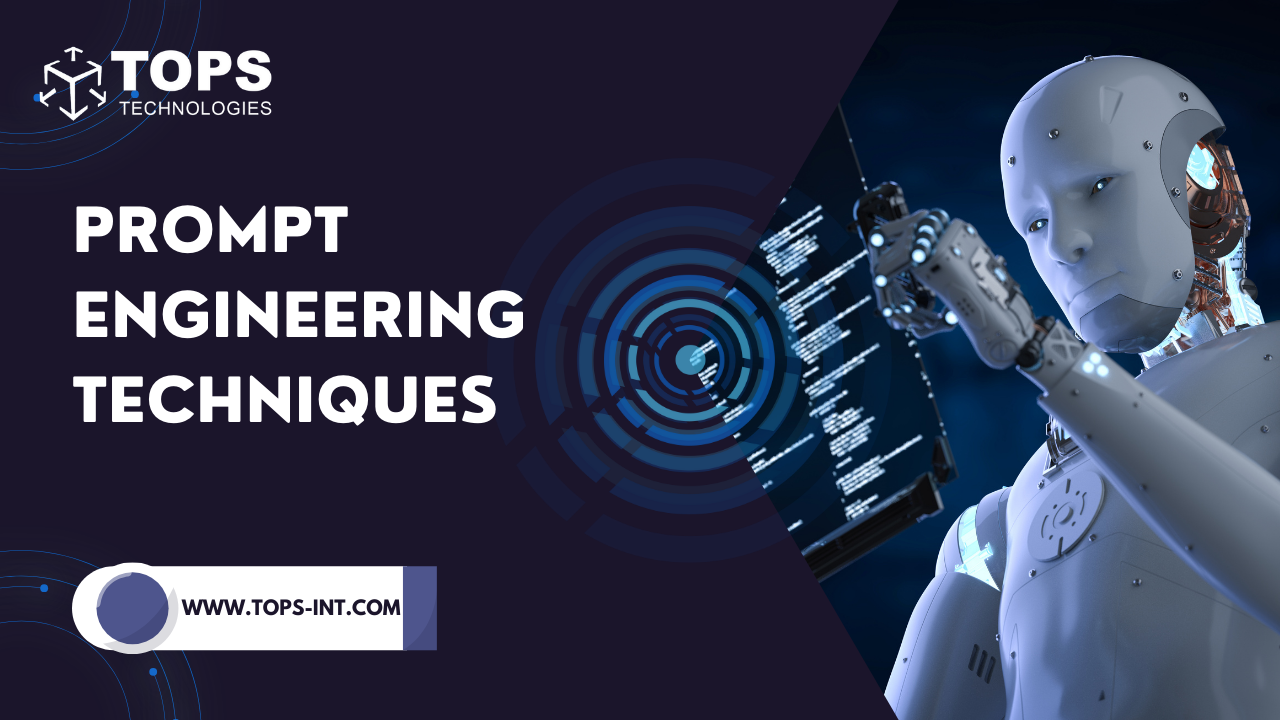
In today’s AI-driven world, prompt engineering has become an essential skill for maximizing the capabilities of artificial intelligence. By creating precise instructions, prompt engineers enable AI language models like GPT-4 to generate accurate, relevant, and helpful responses. This article explores the definition of prompt engineering, how it works, real-world examples, and the importance of AI prompt engineering courses in developing this skill.
What is Prompt Engineering?
Prompt engineering is the art and science of crafting inputs or prompts that guide AI models in generating desired responses. This is especially critical in natural language processing (NLP) with large language models (LLMs), where prompt engineering creates the pathway for AI to perform complex tasks. The process typically involves testing and adjusting prompts to ensure the AI produces responses with precision and relevance.
The objective of prompt engineering is to optimize accuracy and context within AI-generated output, empowering users to leverage AI for various purposes, including content creation, customer service, and problem-solving. As the field of AI continues to grow, prompt engineering is proving to be a critical method in maximizing AI’s potential.
Why Prompt Engineering Matters
The need for prompt engineering has become more pronounced as AI models become integral to business and daily operations.
Here’s why it’s important:
- Precision: Effective prompts yield accurate and focused responses, reducing the likelihood of irrelevant content.
- Efficiency: Prompt engineering enables users to instruct AI on specific tasks, enhancing workflow speed and accuracy.
- Wider Accessibility: With well-designed prompts, AI becomes accessible to users with limited technical knowledge, increasing its applicability across various fields.
How Prompt Engineering Works
Prompt engineering typically involves a sequence of steps that improve AI output:
- Define the Objective: Clarify the AI’s intended task, considering factors like tone, structure, and length.
- Create an Initial Prompt: Develop a basic prompt that conveys the main task. This may be a summary request, list format, or question.
- Test and Refine: Run the prompt through the model and analyze the response, making adjustments as needed.
- Iterate: Refine the prompt iteratively to achieve the most accurate and relevant output.
Examples of Effective Prompt Engineering
The following examples illustrate how carefully crafted prompts enhance AI’s output quality:
Example 1: Summarization
Objective: Create a brief summary of a lengthy article.
Basic Prompt: “Summarize this article.”
Refined Prompt: “Summarize the key points of this article in two sentences, focusing on economic impacts and policy outcomes.”
By adding specificity, this refined prompt yields a more relevant and focused summary.
Example 2: Content Generation for Marketing
Objective: Generate a blog post on digital marketing trends.
Basic Prompt: “Write a blog post on digital marketing trends.”
Refined Prompt: “Write an engaging, 1000-word blog post about digital marketing trends for 2024, covering topics like AI, personalization, and data privacy for marketing professionals.”
The refined prompt helps the AI produce content tailored to the target audience, enhancing quality and relevance.
Example 3: Customer Support Troubleshooting
Objective: Provide troubleshooting steps for software issues.
Basic Prompt: “Help with a software issue.”
Refined Prompt: “Provide step-by-step troubleshooting instructions to resolve an issue with connecting my computer to Wi-Fi.”
This refinement ensures the AI response is actionable and relevant.
Learn More: AI vs Machine Learning vs Deep Learning
Prompt Engineering Techniques

Several techniques can improve prompt effectiveness, leading to more relevant AI responses:
1. Specificity and Clarity
A clear and specific prompt avoids ambiguity. For instance, rather than asking, “Describe AI,” a prompt like “Describe the role of AI in medical diagnosis” will produce a more focused answer.
2. Structured Prompts
Structured prompts, where the question is broken down into parts, can yield better responses. For example, rather than asking “How can I improve SEO?” try a prompt like “List five practical SEO techniques for increasing website traffic.”
3. Example-Based Prompts
Including examples in a prompt provides context. For instance, if you’re requesting a list, including a sample entry can help AI understand the desired format.
4. Output Parameters
Setting parameters such as format, tone, or length can refine the output. Specifying “in 200 words” or “in a formal tone” ensures the response aligns with the intended style.
5. Iterative Testing
Effective prompt engineering often requires testing and iteration. Even small adjustments can improve accuracy, making repeated testing essential.
Benefits of Prompt Engineering
Prompt engineering provides numerous benefits for users and organizations alike:
- Increased Productivity: Tailored prompts help automate tasks, saving time.
- Better User Experience: Effective prompts generate responses that meet user needs, enhancing satisfaction.
- Scalability: With prompt engineering, AI applications can extend across departments, from marketing to customer service.
- Cost Savings: Automated processes help reduce costs by minimizing manual input.
Learning Prompt Engineering through AI Prompt Engineering Courses

As the demand for prompt engineering grows, AI prompt engineering courses are becoming invaluable. These courses cover essential techniques and strategies for crafting effective prompts, providing professionals with the skills needed to fully harness AI’s capabilities. Below are some highly recommended prompt engineering courses:
- TOPS Prompt Engineering Course: Covering fundamental techniques for various models, this course teaches effective prompt creation.
- AI Prompt Engineering Specialization: A comprehensive course with real-world exercises and case studies for practical learning.
Each of these courses equips users with critical prompt engineering skills to optimize AI responses, making them beneficial for beginners and professionals alike.
Applications of Prompt Engineering Across Industries
Prompt engineering has diverse applications, contributing to efficiency and productivity across multiple fields:
1. Customer Support
AI chatbots utilize prompt engineering to provide timely and accurate responses, enhancing the customer support experience and streamlining issue resolution.
2. Healthcare
In healthcare, prompt engineering allows AI to assist in clinical decision-making, patient support, and data analysis, empowering medical professionals with timely information and insights.
3. Education
In education, AI-powered tools support students by generating study guides, summaries, and exam preparation materials. Tailored prompts make these tools more personalized and effective.
4. Marketing and Content Creation
Prompt engineering is integral to creating customized marketing content, blog posts, and product descriptions. In marketing, AI prompt engineering enables professionals to drive targeted campaigns that engage specific audiences effectively.
Challenges in Prompt Engineering
While prompt engineering is beneficial, it does come with challenges:
- Complexity in Design: Crafting effective prompts requires both knowledge of AI capabilities and a clear understanding of task requirements.
- Trial and Error: Finding the optimal prompt often involves iterative testing, which can be time-consuming.
- Model Limitations: Not all AI models respond equally to prompt engineering; responses may vary based on the model’s design and training data.
The Future of Prompt Engineering

The future of prompt engineering holds exciting possibilities. As AI models evolve, self-adjusting prompts and adaptive learning may allow AI systems to refine responses based on user feedback autonomously. These advancements will make AI more accessible across industries, enabling professionals to leverage it for increasingly complex tasks. With the continued rise of prompt engineering courses, professionals can stay ahead of the curve, honing their skills and optimizing AI’s performance across diverse applications.









